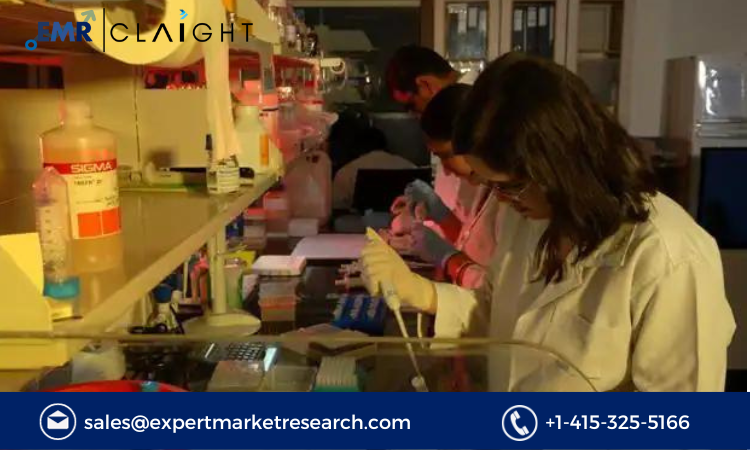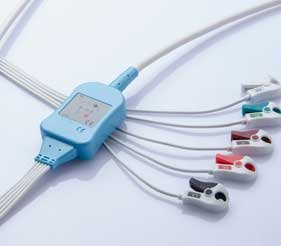The pegfilgrastim biosimilars market has gained significant attention, especially in the context of cancer treatment. Pegfilgrastim, an essential supportive therapy, helps manage chemotherapy-related complications by stimulating white blood cell production, thus reducing the risk of infections. With the rising incidence of cancer globally and growing healthcare cost pressures, demand for affordable alternatives like biosimilars is increasing. Let’s explore the key factors driving the Pegfilgrastim biosimilars market and the opportunities and challenges that lie ahead.
Why is the Pegfilgrastim Biosimilars Market Growing?
1. Rising Cancer Incidence and Need for Supportive Therapies
Cancer continues to be a leading cause of mortality worldwide. In 2023, leukaemia cases alone reached 0.58 million globally. Chemotherapy, the most common treatment for various cancers, can significantly weaken the immune system, leaving patients at a heightened risk of infection. Pegfilgrastim, which is derived from the parent molecule filgrastim, helps restore immune function by stimulating white blood cell production.
Due to its benefits, the demand for Pegfilgrastim is strong, especially for patients undergoing chemotherapy. However, the high cost of the branded version of Pegfilgrastim has led to a need for affordable alternatives, opening the door for biosimilars. Pegfilgrastim biosimilars offer a cost-effective solution that is driving the growth of this market and making it more accessible to patients worldwide.
2. Growing Adoption of Biosimilars
The healthcare industry is increasingly recognizing the value of biosimilars as effective, lower-cost alternatives to expensive biologics. Biosimilars are complex but highly similar to their original biologic counterparts, offering the same therapeutic benefits. With regulatory bodies like the U.S. FDA and the European Medicines Agency supporting biosimilar development, more Pegfilgrastim biosimilars are entering the market. This growing regulatory support and increasing awareness among healthcare providers have positioned biosimilars as a mainstream solution, further accelerating the Pegfilgrastim biosimilars market.
Key Drivers of the Pegfilgrastim Biosimilars Market
a) Rising Cost Pressure on Healthcare Systems
Healthcare costs continue to rise globally, and biologics, while effective, often come with high price tags. Biosimilars, including Pegfilgrastim, are now seen as viable alternatives that can help reduce the financial burden on healthcare systems. Governments and insurance providers are increasingly endorsing biosimilars to manage healthcare costs without compromising the quality of care. This support is a major factor in the growth of the Pegfilgrastim biosimilars market, making biosimilars an essential part of cost-containment strategies.
b) Technological Advances in Biosimilar Production
Advances in biotechnology have improved the quality and production efficiency of biosimilars, making them more competitive with original biologics. These advances include enhanced production processes, improved cell line engineering, and refined manufacturing techniques that boost the purity and efficacy of Pegfilgrastim biosimilars. As a result, biosimilar manufacturers can now produce Pegfilgrastim at a lower cost and with shorter development cycles, making it easier to meet the rising demand and sustain market growth.
c) Policy and Regulatory Support for Biosimilars
Many governments are actively promoting biosimilars by implementing supportive policies. In the United States, for instance, the Biosimilar Action Plan aims to reduce entry barriers and stimulate competition in the biologics market. Similarly, Europe has been at the forefront of biosimilar approvals, with the EMA laying out clear pathways for biosimilar regulatory approval. This regulatory support has made it easier for companies to bring Pegfilgrastim biosimilars to the market, fostering industry growth.
Competitive Landscape of the Pegfilgrastim Biosimilars Market
The Pegfilgrastim biosimilars market is competitive, with key players focusing on product quality, distribution, and R&D investments. Some of the major players include:
- Merck & Co., Inc.: Known for its robust R&D capabilities and diversified biosimilar portfolio.
- Biocon Limited: A leader in emerging markets, Biocon focuses on making biosimilars accessible to low- and middle-income countries.
- Pfizer Inc.: With a strong presence in the global biosimilars market, Pfizer aims to expand its Pegfilgrastim offerings worldwide.
- Dr. Reddy’s Laboratories Ltd: Concentrating on affordable oncology treatments, Dr. Reddy’s is making Pegfilgrastim biosimilars available across various regions.
These companies are heavily invested in clinical trials, production quality, and regulatory compliance, setting the bar high for new entrants. Many companies are also forming strategic partnerships and collaborations to expand their biosimilar offerings, reduce development costs, and accelerate time-to-market.
Market Expansion Through Strategic Alliances
To compete effectively, several companies are pursuing mergers and acquisitions (M&A). Partnerships between pharmaceutical and biotech firms allow for knowledge sharing, risk mitigation, and efficient product development. These alliances also enable companies to enter new markets, ensuring a steady supply of Pegfilgrastim biosimilars worldwide.
Challenges in the Pegfilgrastim Biosimilars Market
While the Pegfilgrastim biosimilars market has strong growth potential, it faces a few challenges:
1. Complex Regulatory Processes
Biosimilars, unlike traditional generic drugs, must undergo extensive testing to demonstrate similarity to the original biologic. These regulatory hurdles can delay product approvals, particularly in regions where biosimilar guidelines are still evolving. Moreover, regulatory variations between countries add to the complexity, potentially limiting Pegfilgrastim biosimilar availability in certain markets.
2. High R&D and Manufacturing Costs
Although biosimilars aim to provide affordable alternatives, the production process is complex and requires significant investment in R&D and quality control. Biosimilar companies must allocate resources for clinical trials, regulatory compliance, and advanced manufacturing facilities, making the development of Pegfilgrastim biosimilars a costly endeavor.
3. Educating Healthcare Providers and Patients
Biosimilars are relatively new, and misconceptions about their safety and efficacy can hinder market adoption. Educating healthcare providers and patients is essential for driving biosimilar acceptance. Companies in the Pegfilgrastim biosimilars market are investing in awareness programs to build trust and ensure that these therapies are adopted widely.
Future Prospects of the Pegfilgrastim Biosimilars Market
Projected Market Growth (2024-2032)
The Pegfilgrastim biosimilars market is expected to grow at a compound annual growth rate (CAGR) of 7% from 2024 to 2032. Key factors contributing to this growth include rising cancer incidence, expanding biosimilar adoption in emerging markets, and continuous advancements in biotechnology.
Expansion into Emerging Markets
Emerging economies, particularly in Asia-Pacific and Latin America, present significant growth opportunities. High cancer rates, coupled with limited access to expensive biologics, make these regions ideal markets for Pegfilgrastim biosimilars. As awareness grows, companies are increasing their focus on these regions, leading to improved access and market penetration.
Innovative Production and Cost Reduction
Technological advancements in biosimilar production could lead to further cost reductions, making Pegfilgrastim biosimilars even more affordable. Companies are investing in innovations that streamline production, improve efficiency, and ensure high quality. These innovations will likely support long-term growth and solidify the role of Pegfilgrastim biosimilars in oncology care.











